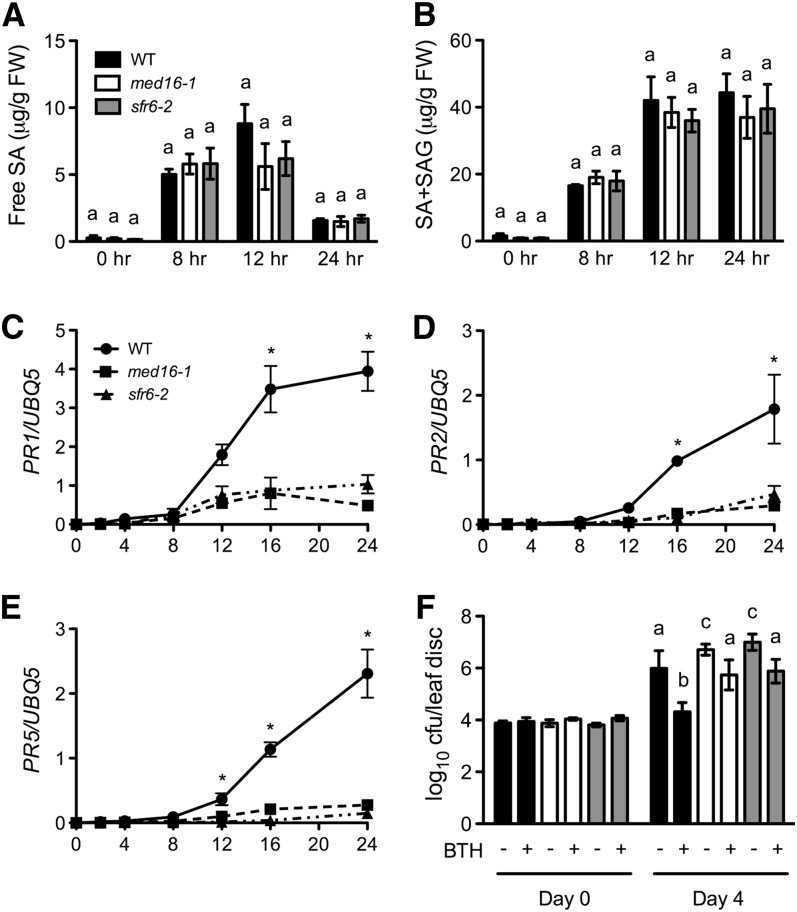Figure 5.
Pst DC3000/avrRpt2–Induced SA Accumulation and BTH-Induced Defense Responses in med16/sfr6 Mutants.
(A) and (B) Free SA (A) and total (B) levels in Pst DC3000/avrRpt2–infected med16/sfr6 and wild-type (WT) plants. Four-week-old soil-grown plants were inoculated with Pst DC3000/avrRpt2 (OD600 = 0.002). The inoculated leaves were collected at the indicated time points for SA measurement. Data represent the mean of four independent samples with sd. FW, fresh weight; SAG, SA-2-O-β-d-glucoside.
(C) to (E) BTH-induced PR1 (C), PR2 (D), and PR5 (E) gene expression in med16/sfr6 and wild-type plants. Four-week-old soil-grown plants were treated with soil drenches plus foliar sprays of 0.3 mM of BTH solution. Leaf tissues were collected at the indicated time points and subjected to total RNA extraction and real-time qPCR analysis. Data represent the mean of three independent samples with sd.
(F) BTH-induced resistance to Pst DC3000 in med16/sfr6 and wild-type plants. Four-week-old soil-grown plants were treated with soil drenches plus foliar sprays of 0.3 mM of BTH solution (+BTH) or water (−BTH). After 24 h, the plants were inoculated with Pst DC3000 (OD600 = 0.001). The in planta bacterial titers were determined immediately and 4 d after inoculation. Data represent the mean of eight independent samples with sd. Different letters above the bars in (A), (B), and (F) indicate significant differences (P < 0.05, Student’s t test), and an asterisk (*) in (C), (D), and (E) indicates that the expression level of the gene in the wild type was significantly higher than in both med16-1 and sfr6-2 (P < 0.05, Student’s t test). Note that the comparison was made separately among the wild type, med16-1, and sfr6-2 for each time point. All experiments were repeated three times with similar results. cfu, colony-forming units.

